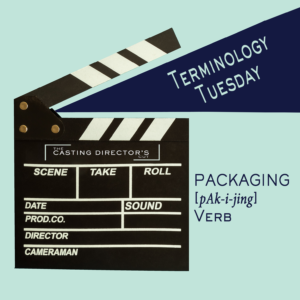 Packaging is a type of bundling where an agency develops a film or television project using writers, directors and/or actors it represents, before giving other agencies a chance to submit their clients for the project.
Packaging is a type of bundling where an agency develops a film or television project using writers, directors and/or actors it represents, before giving other agencies a chance to submit their clients for the project.
A packaged project is in between the script stage and the pre-production stage.
A typical packaging of a film might include a shortlist of the main actors who are willing to commit to being in the film, a name director and/or cinematographer who agrees to work on the film and/or a handful of producers who are committed and tied to the production. Many times, it’s often one of the factors that affect whether the project gets a green light or not.
Films can still get made without packaging, but, when you get a whole bunch of decisions already made for you all tied with a bow it’s much easier to say yes.
The talent agency then negotiates a packaging fee. Instead of collecting the usual 10% fee from individual clients, the agency receives the equivalent of 5% of what the studio or network pays the production company; 5% of half of any profit the production company earns; and 15% of adjusted gross.
So in theory, packaging is great for top-tiered agencies. But it can also be unfair to writers.
Member last spring?
The WGA filed a civil lawsuit against the four major packaging agencies. The claims were that packaging fees violate federal unfair competition laws. The WGA also felt because of these packing agreements, agencies have no financial incentive to get TV writers more money.
𝗧𝗵𝗲 𝘁𝗮𝗸𝗲𝗮𝘄𝗮𝘆?
If you’re looking to create your own content—focus more on the content and less on the prospective buyer. If you have a great and original concept, someone will want to buy it. And at that point, you’ll have the advantage of options.
#themoreyouknow#TheCastingDirectorsCut#terminologytuesday